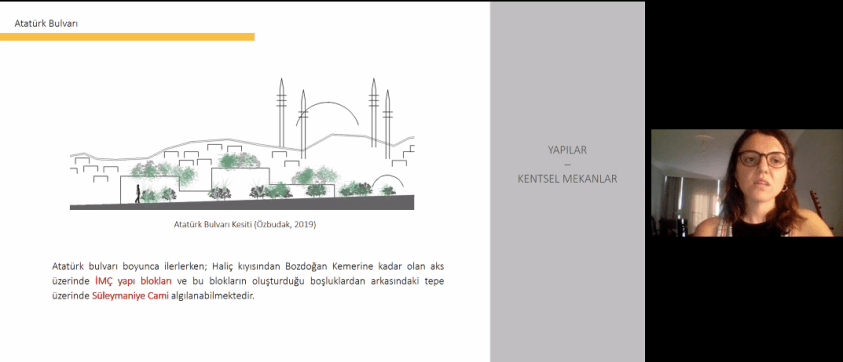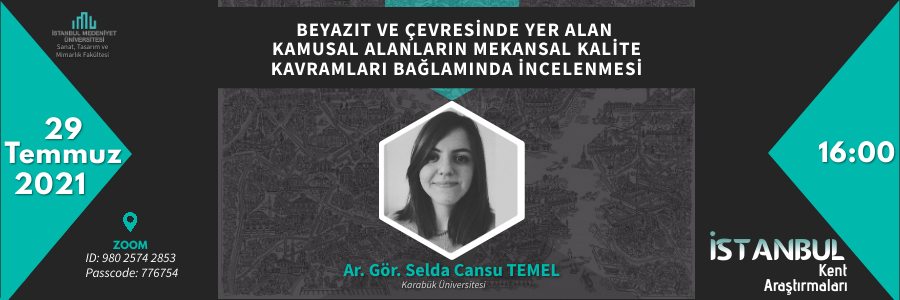The 15th seminar of the “Istanbul Urban Studies” seminar series organized by the Department of Urban and Regional Planning of Istanbul Medeniyet University moderated by Res. Assist. Özge GÜRSOY was held online on Thursday, 29th July 2021. At the seminar, Res. Assist. Selda Cansu TEMEL from Karabuk University presented their joint study with Özge GÜRSOY and Özgün ÖZBUDAK titled “Beyazıt ve Çevresinde Yer Alan Kamusal Alanların Mekânsal Kalite Kavramları Bağlamında İncelenmesi” (Analyzing Public Spaces In and Around Beyazıt In Terms of Spatial Quality).
TEMEL began her presentation by explaining the concepts like space and urban public space and mentioned the important features of urban space. She also addressed Lynch´s five elements (nodes, paths, districts, landmarks, and edges) which shape the mental representation of the city and spoke about the importance of these elements for the design of public spaces. TEMEL first provided information about the historical development of the study area and evaluated the public spaces in that area according to Lynch´s five elements. Secondly, she discussed the public spaces in the study area in terms of spatial quality by referring to the basic factors and design criteria shaping squares. Finally, she reviewed the area according to the results of the survey study and discussed various factors including intended use of the area by users, feelings and emotional status of users in the area, the defining criteria offered by the users for the area, positive/advantageous design features or imperfections of the area as mentioned by users, security level of the area as perceived by the users, and frequency of usage. TEMEL stressed that according to the survey results, public spaces in the study area are mostly used for touristic purposes and added that the most frequently mentioned problems by users are security and neglect of the area. She underlined that inefficacy of preservation actions for cultural and architectural heritage in historical areas and decreasing usage value in the district reduce utilization benefits of an area even though it was designed with proper criteria.
In the following q/a session, it was discussed whether user satisfaction and usage frequency change based on residing in the area or not and whether the public space design criteria and user groups have changed with the transformation of urban land use functions surrounding public space.


